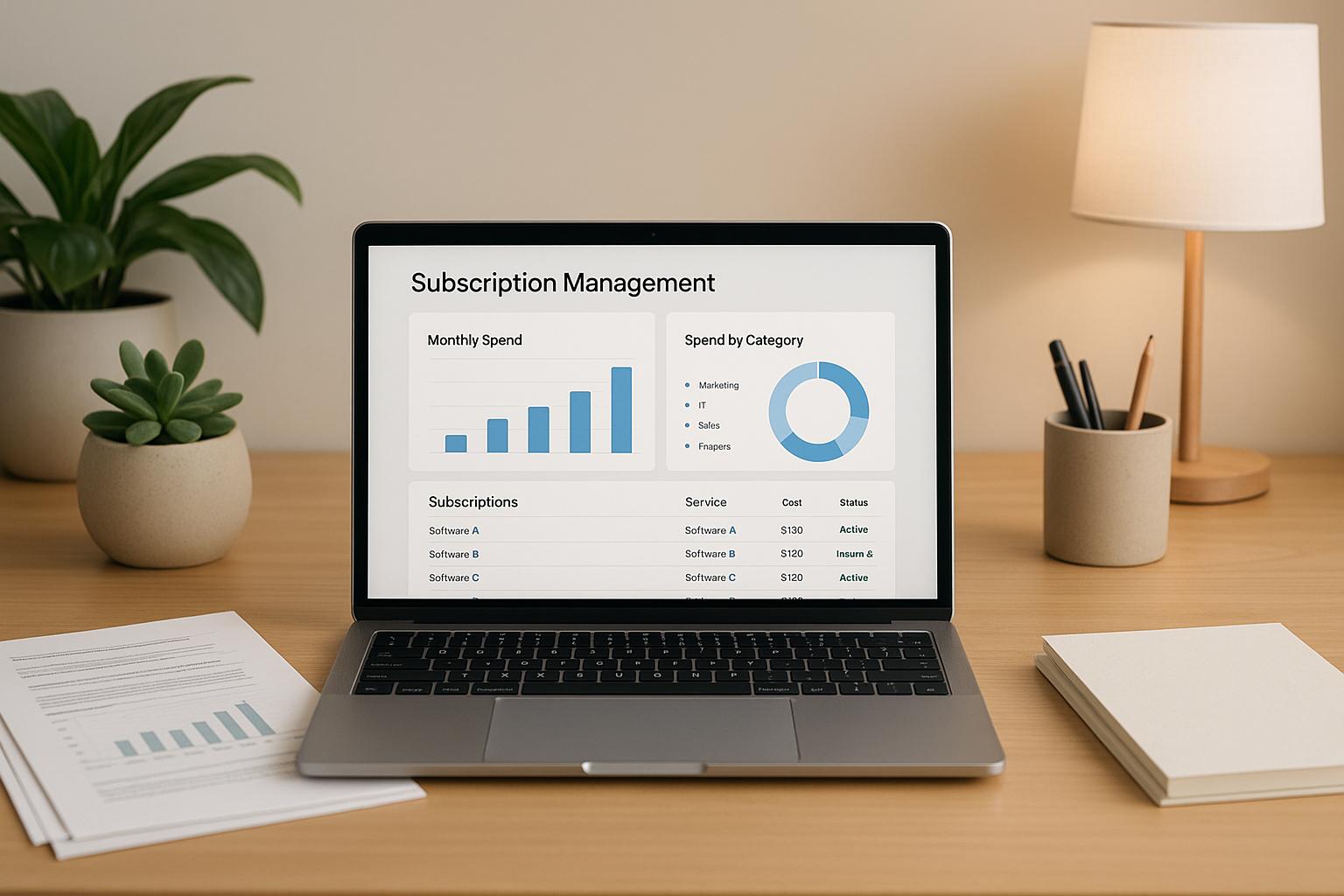Ultimate Guide to Series A Valuations

Series A valuations determine a startup's worth during its first major funding round. Unlike seed rounds, these valuations are based on actual revenue, market traction, and growth potential. Here's what you need to know:
- Funding Range: Startups typically raise $5M–$20M, with median pre-money valuations around $45M in 2025.
- Valuation Factors: Revenue growth, customer acquisition costs (CAC), retention rates, and market size are key.
- Industry Valuations: Tech/SaaS ($20M–$80M), AI/DeepTech ($50M–$150M), FinTech/Healthcare ($30M–$120M), Consumer/E-commerce ($15M–$50M).
- Calculation Methods: Venture Capital Method (exit potential), Discounted Cash Flow (future cash flows), Market Comparables (recent deals).
- Key Metrics: ARR ($1.5M–$3M+), LTV:CAC (3:1 or higher), burn rate ($200K–$500K/month), gross margins (60–80%+).
Quick Overview
| Metric/Method | Expectation/Use Case | Key Impact |
|---|---|---|
| ARR | $1.5M–$3M+ | Validates revenue traction |
| LTV:CAC Ratio | 3:1 or higher | Shows sustainable growth |
| Burn Rate | $200K–$500K/month | Reflects capital efficiency |
| Comparable Analysis | Similar recent deals | Sets market-driven benchmarks |
Preparing for a Series A involves building strong financial models, understanding your market position, and negotiating favorable terms. Expert guidance can help you navigate these complexities and secure a valuation that aligns with your growth goals.
How to Calculate Series A Valuations
When preparing for investor discussions, understanding how Series A valuations are calculated is key to setting realistic expectations. There are three primary methods to consider. Let’s break them down to help you decide which approach works best for your company.
Venture Capital Method
The Venture Capital (VC) Method focuses on estimating your company’s potential exit value within five to seven years. This is typically done using industry revenue multiples. From there, it calculates the equity percentage required to meet the investor’s target returns. For instance, if investors are aiming for a 10× return on their Series A investment, you can determine the equity percentage needed to reach that goal, which then helps you estimate a pre-money valuation. While this method aligns closely with how investors assess growth potential, it heavily depends on assumptions about future exit conditions and market trends.
Discounted Cash Flow (DCF) Method
The DCF method projects your company’s future cash flows and discounts them to their present value using a risk-adjusted discount rate. It’s a rigorous approach grounded in financial principles, making it ideal for businesses with steady and predictable revenue streams. However, its effectiveness is limited by the uncertainty of growth projections and the challenge of accurately estimating the discount rate. This makes it less practical for startups with volatile or uncertain cash flows.
Market Comparables and Past Transactions
Market comparables rely on analyzing recent Series A deals involving companies similar to yours. This method offers a reality check by providing a market-driven benchmark for valuation. For example, if your SaaS company generates $2 million in annual recurring revenue (ARR) and similar deals in your sector are valued at 6× ARR, your implied valuation would be approximately $12 million. You can then adjust this figure based on factors like growth potential, market size, and competition. The main challenge here is finding truly comparable deals, as no two companies are identical.
| Valuation Method | Best Use Case | Key Advantage | Main Limitation |
|---|---|---|---|
| Venture Capital | Growth-stage tech companies | Aligns with investor thinking | Relies on exit assumptions |
| Discounted Cash Flow | Businesses with steady revenue | Grounded in financial theory | Sensitive to assumptions |
| Market Comparables | Active sectors with recent deals | Provides market benchmarks | Hard to find accurate comparables |
Why Expert Guidance Matters
Applying these valuation methods effectively often requires professional financial expertise. Advisors can help refine your financial models, validate your assumptions, and craft a compelling narrative for investors. Partnering with experienced teams, like Phoenix Strategy Group, can provide valuable support as you navigate the valuation process. By using a combination of these methods to establish a reasonable valuation range, you can position yourself to secure funding that truly reflects your business’s growth potential.
Metrics That Drive Series A Valuations
Knowing which metrics investors focus on can be the difference between hitting your desired valuation or falling short. These numbers not only showcase your business's operational health but also support the assumptions behind your valuation. Let’s dive into the key metrics - starting with revenue growth and customer traction - that play a critical role in shaping your Series A valuation.
Revenue Growth and Customer Traction
For Series A startups, an ARR (Annual Recurring Revenue) between $1.5M and $3M is often the benchmark. This figure serves as proof of product-market fit and the ability to generate consistent revenue.
But ARR alone isn’t enough. Investors also look at how fast you’re growing. For instance, a SaaS company scaling from $1M to $2.5M ARR in a year reflects 150% year-over-year growth, signaling strong scalability.
Metrics like LTV:CAC (Lifetime Value to Customer Acquisition Cost) further validate growth efficiency. A ratio above 3:1 suggests your business is acquiring customers in a sustainable way. Similarly, Net Revenue Retention (NRR) above 110% indicates solid customer retention and revenue expansion, both of which boost investor confidence.
"As a home service business owner, understanding complex financials and Unit Economics always seemed overwhelming - until we started working with Phoenix Strategy Group." - Rob Mulvin, Founder / CEO, All Pro Shade
Burn Rate and Runway
Revenue is important, but so is controlling your expenses. Your monthly burn rate - the amount of cash you’re spending - directly impacts how investors perceive your risk profile. For Series A companies, a burn rate between $200K and $500K per month is generally considered manageable.
Runway, or the amount of time your company can operate before running out of cash, is another critical factor. Investors typically expect a runway of 18-24 months post-Series A. For example, if your monthly burn is $400K and you aim for an 18-month runway, you’ll need about $7.2M, plus some extra as a buffer. Companies that demonstrate the ability to stretch their runway while maintaining growth often earn higher valuations.
The CAC payback period is another important metric. This measures how quickly you recover the cost of acquiring a new customer. Companies with payback periods under 12 months are especially attractive since they can reinvest cash flow into growth more efficiently.
Market Size and Competitive Position
While internal metrics show how your company is performing, external factors like market size and competition also play a big role in your valuation. A large Total Addressable Market (TAM) is essential for demonstrating growth potential, while the Serviceable Addressable Market (SAM) helps investors understand the portion of the market you can realistically capture.
Your market share and positioning within the competitive landscape further influence valuation multiples. Companies that dominate a niche market often receive higher valuations than those in crowded, competitive spaces.
Additionally, having unique advantages - such as proprietary technology, network effects, or high switching costs - can drive up your valuation. For example, a SaaS company with retention rates well above industry averages signals a strong competitive edge.
Gross margins also matter. SaaS companies with gross margins above 80% are typically seen as more scalable and profitable, which can lead to higher valuations.
| Metric | Series A Expectation | Impact on Valuation |
|---|---|---|
| ARR | $1.5M–$3M+ | Validates traction and market fit |
| LTV:CAC Ratio | 3:1 or higher | Indicates sustainable growth |
| Monthly Burn Rate | $200K–$500K | Reflects capital efficiency |
| Gross Margin | 60–80%+ (SaaS) | Demonstrates profitability potential |
| Net Revenue Retention | 110%+ | Shows expansion potential |
Getting the Right Support
Navigating these metrics can be challenging, but professional advisors can make a big difference. Phoenix Strategy Group specializes in helping growth-stage companies refine their financial models and highlight the metrics that matter most to Series A investors. Their expertise in areas like unit economics and revenue analysis can help founders identify and address weaknesses before fundraising begins.
Ultimately, securing a strong Series A valuation comes down to understanding what metrics investors care about and ensuring your data tells a compelling story of growth and efficiency.
How to Prepare for Series A Valuations
Once you’ve nailed down the key metrics, the next step is crafting a solid financial narrative for your Series A discussions. This stage is critical - being well-prepared can be the difference between securing the valuation you want and walking away disappointed. It’s all about building a financial story that’s backed by solid data and presenting it in a way that resonates with investors.
Building Financial Models and Projections
Your financial model is the cornerstone of your valuation pitch. Investors will scrutinize every assumption, so your model needs to be airtight. Start with 18-24 months of historical performance data. This demonstrates credibility and shows real trends instead of just future guesses.
When forecasting, focus on bottom-up projections rather than top-down estimates. Break down your revenue by customer segments, pricing tiers, or product lines. For example, if you’re running a SaaS business, track metrics like monthly recurring revenue (MRR) growth by analyzing new customer acquisition, churn rates, and expansion revenue. This detailed approach shows investors you have a deep understanding of your business operations.
Projections should extend 3-5 years into the future, with the first 12-18 months being the most detailed. Provide monthly breakdowns for the first year, quarterly for the next two, and annual projections after that. Keep your growth assumptions realistic - investors have seen too many overly optimistic forecasts that fail to deliver.
Don’t overlook cash flow forecasting. Model your monthly burn rate, accounting for seasonal trends and planned investments. Include three scenarios - conservative, base, and optimistic - to demonstrate that you’ve considered various outcomes and have contingency plans in place.
Clearly outline your unit economics. Show how metrics like customer acquisition costs (CAC), lifetime value (LTV), and payback periods evolve as you scale. Investors want to see that your business becomes more efficient over time, not less.
Presenting Market Comparables
After building your financial model, use market comparisons to strengthen your valuation case. These external benchmarks help investors see how your company stacks up against similar businesses.
Start by identifying companies in your industry that have raised Series A funding within the last 12-18 months. Look for those with comparable business models, target markets, and growth stages. For SaaS companies, focus on metrics like revenue multiples, which often range from 5x to 7x annual recurring revenue for Series A rounds.
Create a side-by-side comparison table with key metrics like revenue, user base, growth rate, and funding amounts. Be transparent about differences - if a comparable company operates in a larger market or uses a different technology stack, acknowledge it and explain how it impacts the comparison.
Use reliable sources for your data, such as public filings, industry reports from firms like PitchBook or CB Insights, and press releases. Avoid outdated or irrelevant comparisons. And remember, it’s not just about showing the data - tell the story. Explain why your company deserves a premium or discount compared to the benchmarks. Maybe your retention rates are stronger, your team has more experience, or your product offers a competitive edge.
| Valuation Method | Advantages | Limitations |
|---|---|---|
| Comparable Analysis | Easy to understand, market-based | May lack direct comparables, market volatility |
| VC Method | Focuses on growth potential | Relies on assumptions, can be overly optimistic |
| DCF | Fundamentals-driven, structured | Complex, less ideal for early-stage companies |
Negotiating Valuation and Avoiding Common Mistakes
With your financial models and market data in hand, you’re ready to negotiate. But remember, valuation isn’t just about the headline number. Deal structure can be just as important as the pre-money valuation, so make sure you understand all the terms before negotiating.
One common mistake is focusing solely on valuation while overlooking terms like liquidation preferences, anti-dilution provisions, or board composition. A higher valuation with unfavorable terms could leave you worse off than a slightly lower valuation with founder-friendly terms.
Come prepared with multiple valuation methods to back your position. For instance, if your comparable analysis suggests a $40 million valuation but your DCF model shows $35 million, present both and explain the methodologies. This not only demonstrates thorough preparation but also gives you flexibility during negotiations.
Timing your fundraising strategically can also make a big difference. If you’re hitting strong growth milestones or have a major product launch coming up, waiting a few months could strengthen your position. But don’t wait too long - running low on cash weakens your leverage.
Another pitfall is not preparing your team for due diligence. Investors will want to dig into your financial projections and business metrics. Ensure your accounting is in order, your data is accurate, and your team is ready to answer detailed questions about your business model and assumptions.
Seeking professional guidance can also be invaluable. Firms like Phoenix Strategy Group specialize in helping growth-stage companies prepare for Series A fundraising, from building strong financial models to structuring deals that protect founder interests.
The best founders approach valuation discussions as a collaborative process rather than a battle. Focus on finding investors who align with your vision and can offer more than just capital. Sometimes, a slightly lower valuation from the right investor is better than a higher valuation from someone who doesn’t fully support your business.
Ultimately, preparation is everything. The founders who achieve strong valuations are those who know their metrics inside and out and can clearly articulate a vision for growth. Start your preparation months in advance to position yourself for success.
sbb-itb-e766981
Investor and Advisor Perspectives
When it comes to fundraising, understanding how investors and advisors evaluate Series A valuations can give founders a major advantage. These evaluations are rooted in earlier discussions about key metrics and financial modeling, emphasizing the importance of precise financial strategies that align with investor expectations.
What Investors Look for in Series A Valuations
Investors focus on two main things: scalable growth and managing risk. They evaluate not just how your business is performing today but also how efficiently it can grow in the future.
One of the top priorities? Unit economics. Investors want to see a sustainable relationship between your customer acquisition cost (CAC) and customer lifetime value (LTV). They’ll also keep a close eye on recurring revenue and customer retention rates. Strong, predictable revenue streams signal stability and can lead to better valuations.
Market positioning is another critical factor. Investors want to know what sets your company apart. Whether it’s innovative technology, strong customer loyalty, or a unique competitive edge, these elements serve as a "moat" to protect your position in the market.
And don’t underestimate the importance of your team. A management team with deep industry experience and a track record of success can significantly improve your valuation by reducing the perceived risk of investing in your company.
Finally, investors assess the total addressable market (TAM) to gauge your growth potential. They’re looking for companies operating in markets with strong trends and the ability to allocate capital effectively to drive revenue growth. All of this underscores the need for expert financial planning and execution.
How Financial Advisors Help
To meet these investor expectations, founders often turn to seasoned financial advisors who bring more than just number-crunching expertise to the table. A good advisor can play a pivotal role in shaping your valuation by refining your financial strategy and positioning.
Take firms like Phoenix Strategy Group, for example. They create integrated financial models that link revenue forecasts with operational metrics, cash flow projections, and scenario planning. These models are designed to address investor concerns during due diligence, helping to build trust and confidence.
Financial advisors also help founders develop key performance indicator (KPI) frameworks that align with what investors want to see. By setting up systems to track and report these metrics consistently, advisors help boost investor confidence in both your financial projections and your operational performance.
When it comes to fundraising, experienced advisors can be invaluable. They assist with identifying the right investors for your stage, crafting pitch materials that highlight your strongest valuation drivers, and even negotiating deals that protect your long-term interests.
Strategic guidance on market positioning and deal structure is another area where advisors shine. They help founders understand the finer details of term sheets and negotiate terms that maximize value while safeguarding founder equity.
Phoenix Strategy Group, for instance, goes a step further with tools like its Monday Morning Metrics system, which synchronizes real-time financial data. This ensures founders have up-to-date insights at their fingertips, instilling confidence in investors and supporting higher valuation multiples.
Advisors also help mitigate risks by identifying potential red flags early and developing strategies to address them. This proactive approach can prevent valuation discounts and keep the fundraising process on track.
Key Takeaways for Founders
Series A valuations depend heavily on preparation, execution, and smart positioning. Founders aiming for valuations in the range of $10 million to over $100 million can learn from the common strategies of companies that achieve these results.
Start with integrated systems. Companies that connect finance with revenue operations early on tend to secure higher valuations. This means finance isn't just about crunching numbers - it’s working hand-in-hand with sales and marketing to actively drive revenue. Investors appreciate this level of operational efficiency and often reward it with better multiples.
Prioritize unit economics and steady growth. A strong focus on unit economics - like maintaining a healthy customer acquisition cost (CAC) to lifetime value (LTV) ratio - and ensuring predictable, repeatable revenue growth is key. These metrics signal to investors that your business is built for long-term success.
Be ready for due diligence from the start. Keeping your data clean and organized is non-negotiable. Regular practices like weekly financial closes, accurate bookkeeping, and automated tracking of key metrics make a big difference. When investors can easily verify your numbers in real time, it boosts their confidence and strengthens your valuation.
Know your market position. Whether you're in AI, where valuations often range between $50 million and $150 million, or in consumer e-commerce, typically valued between $15 million and $50 million, staying on top of market comparables and clearly standing out from competitors can significantly improve your negotiating power.
Seek expert advice. Navigating the complexities of Series A valuations is no small feat. Experienced financial advisors can guide you through building detailed financial models, identifying the right investors, and negotiating term sheets. Partnering with firms like Phoenix Strategy Group can provide the expertise you need to secure a strong valuation and set your company up for success.
FAQs
What metrics do investors prioritize when determining a Series A valuation?
When evaluating a Series A valuation, investors often zero in on a mix of financial performance, market potential, and team strength. They analyze key metrics such as revenue growth, gross margins, customer acquisition cost (CAC), lifetime value of a customer (LTV), and monthly recurring revenue (MRR). These numbers give insight into how scalable and profitable the business could be.
But it’s not just about the numbers. Investors also weigh qualitative factors, like the size of the addressable market, how well the company is positioned against competitors, and the founding team’s experience and track record. Having a clear growth plan and solid proof of product-market fit can make all the difference in achieving a favorable valuation.
How can startups use market comparables to improve their Series A valuation pitch?
Startups looking to strengthen their Series A valuation pitch can benefit greatly from using market comparables. This approach involves comparing their business to others of similar size, industry, and growth stage. By analyzing key financial metrics - such as revenue, growth rates, and valuation multiples - founders can create a strong argument for their valuation.
Presenting this comparative data allows founders to demonstrate how their company stacks up against industry benchmarks or even exceeds them. Partnering with financial advisors can simplify this process, ensuring the data is accurate and effectively supports the pitch.
How can financial advisors help startups succeed in a Series A funding round?
Financial advisors are a crucial part of getting startups ready for a successful Series A funding round. They bring expertise in areas such as bookkeeping, fractional CFO services, financial planning and analysis (FP&A), and mergers and acquisitions (M&A) support. These services help ensure your financial operations are organized and your business is prepared for growth.
With their guidance, financial advisors can help you craft a strong pitch for investors, fine-tune your financial strategy, and tackle the challenges of securing funding. Their knowledge and support play a big role in driving long-term growth and setting your company up for future opportunities.




